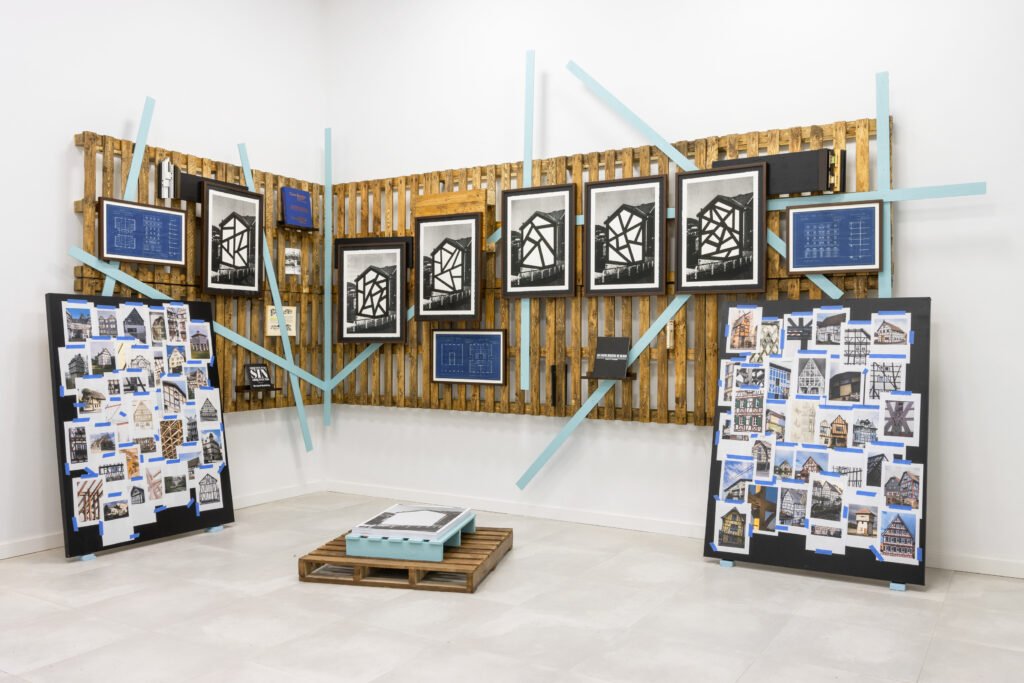
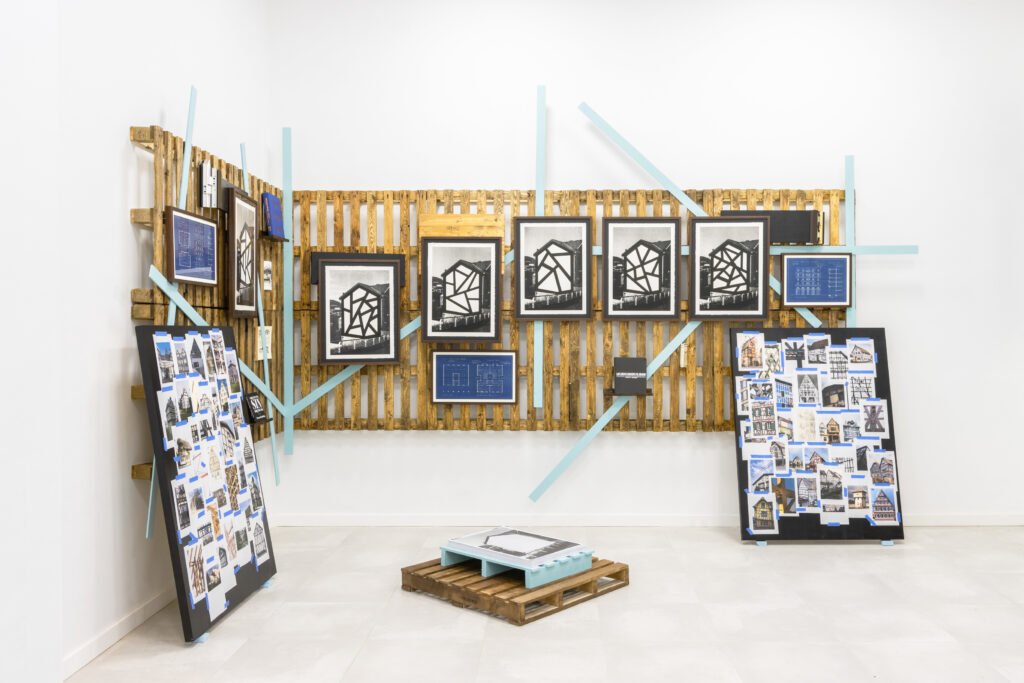
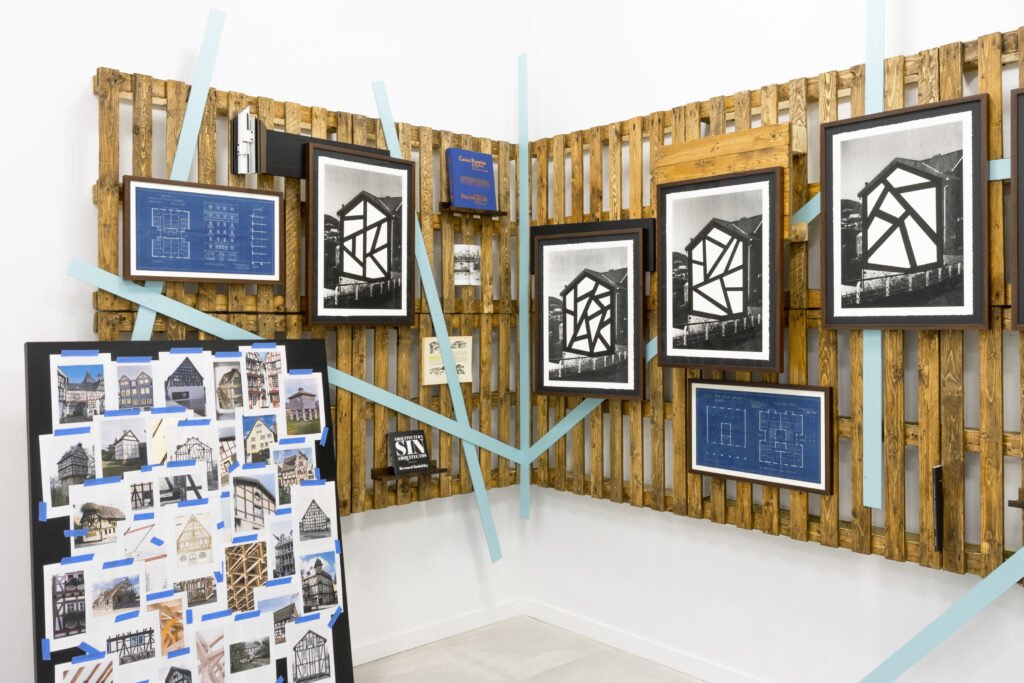

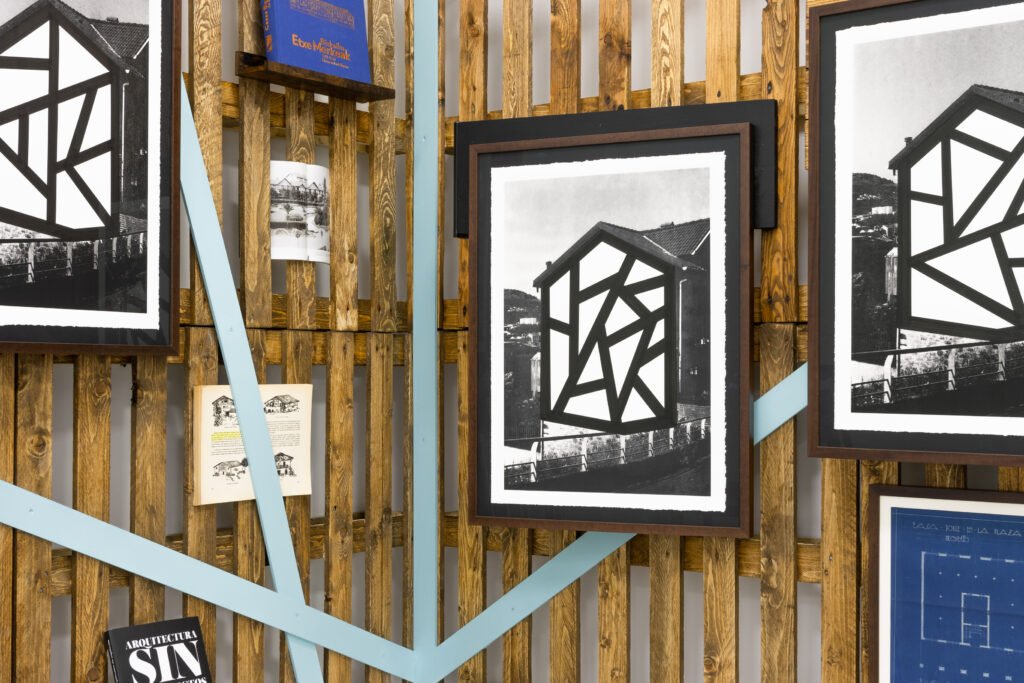

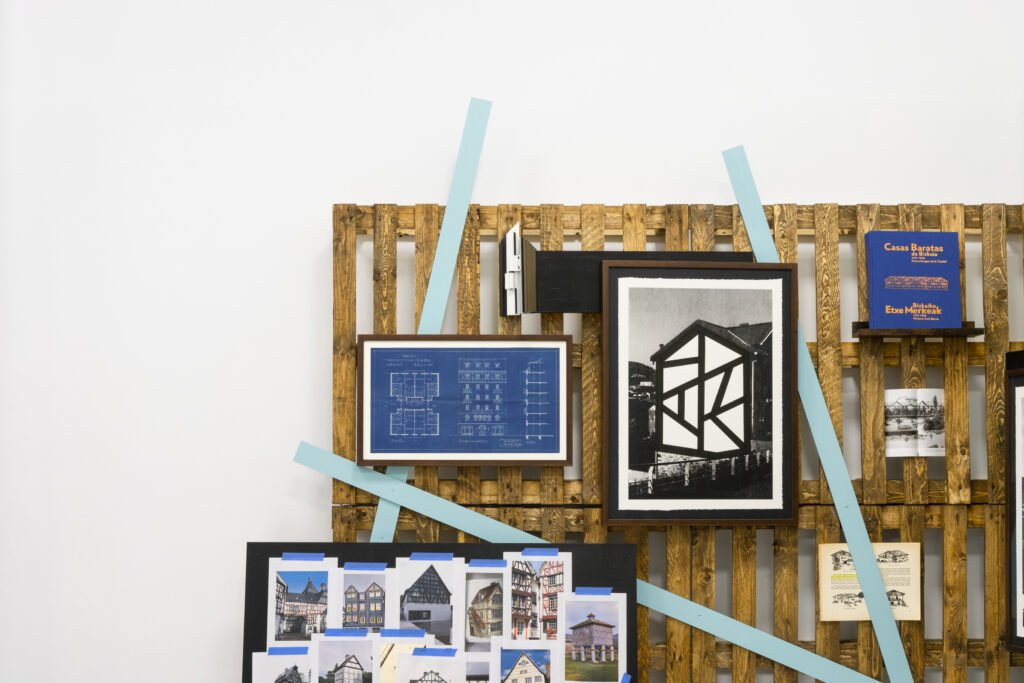
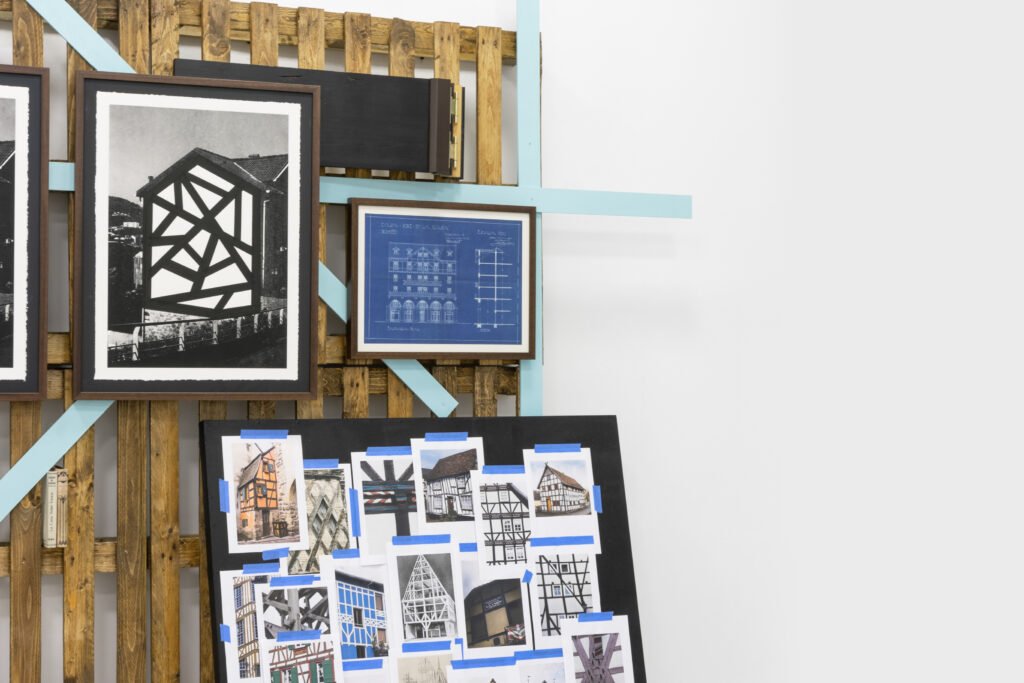
Why do workers’ housing have colorful gables? Taking as a starting point the architecture of the housing cooperatives of the Law of Cheap Houses from 1911-1936 in Bizkaia. This legislation, promoted by the Diputación of Vizcaya and the City Council of Bilbao, proposed a series of measures to alleviate the unhealthy housing conditions that workers suffered as a direct consequence of the rise of the steel industry, which resulted in a massive migration from the countryside to the city. As a result, they had to cram into overcrowded beds and live in conditions of extreme poverty.
Starting with this law in 1911, Bilbao and its surroundings saw the construction of houses under the protection of these laws. One of the styles used in the development of their facades was inspired by neobasque architecture, where we can find patterns among them that create cultural connections with the aim of achieving the most paradigmatic image of the traditional Basque farmhouse.
The project is structured in two phases: first, research, the location of the different groups of houses, and photographic documentation of them with the aim of studying these buildings, their architecture, with its own aesthetic, vernacular symbolism, cultural and popular heritage, with the motivation to reclaim their forms, distant from the large public housing blocks and urban plans that we can find today, devoid of identity, overshadowing the housing cooperatives of the Law of Cheap Houses from 1911-36 in Bizkaia, which are in themselves a form of working-class resistance.
In this first phase, it is proposed to create a photographic archive and then, through its study, extract a set of iconography where, through different artistic interventions using various techniques, a series of decontextualizations, construction schemes, and common architectural symbols in this law are proposed, specifically, the gables, which were originally made of wood but in these constructions, they are created with paint, as if it were trompe-l’oeil, with the aim of proposing new architectural presents or utopias based on the relationship between the two dimensions of representation and the three dimensions of reality.
The project seeks to activate the viewer’s gaze in these neighborhoods through a series of artistic strategies that start from the photographic image and seek to develop a project through a type of inventory/catalog using different languages to highlight the architecture, heritage, and symbols of the buildings of the Cheap Houses Law of 1911 in Bizkaia, indebted to the Neobasque style, giving them a new artistic discourse with the aim of establishing a direct bridge between architectural representation and abstraction through reinterpretation, reflecting the processes of loss of identity, history, degradation, and transformation of working-class housing.
